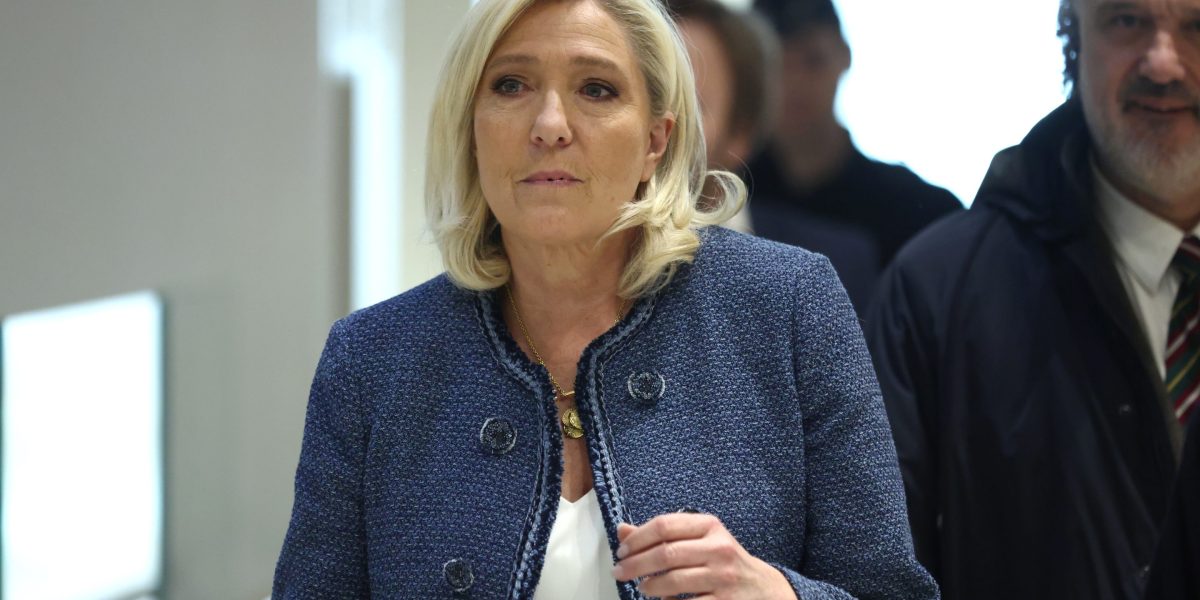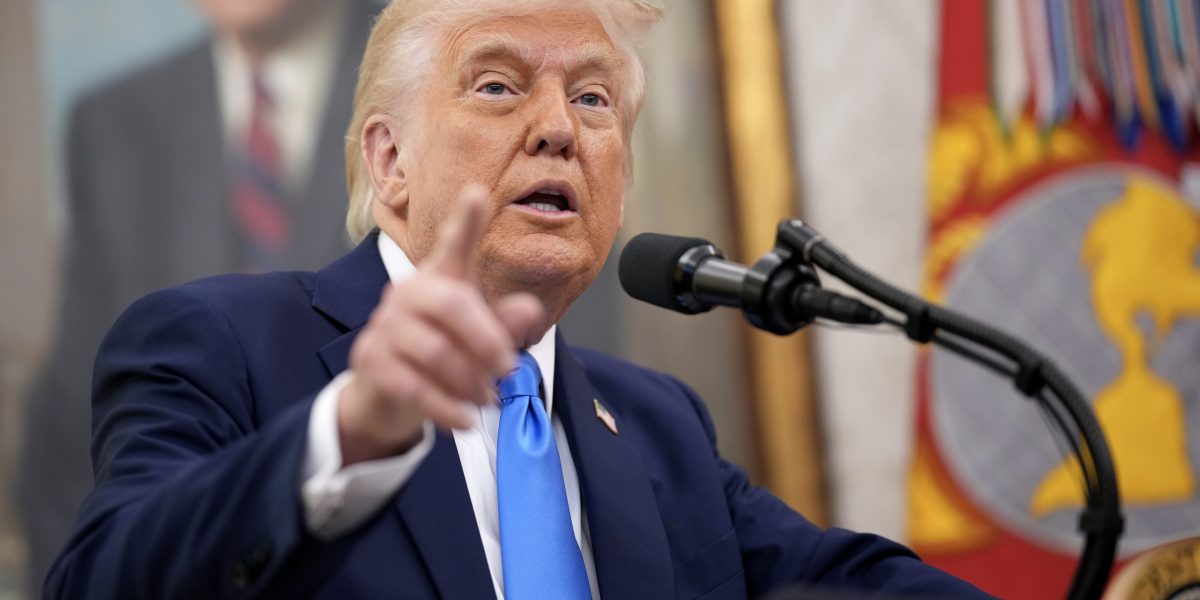- President Trump is set to announce new tariffs on April 2, potentially escalating trade tensions with key allies and further impacting market volatility. Broad-based sanctions on “all countries” are now on the table. Analysts predict sector-wide tariffs averaging 15% across major U.S. trading partners, with potential recessionary and inflationary consequences.
‘Liberation Day’ is upon us. On Wednesday, April 2, the Trump administration is expected to make a raft of new tariff announcements, potentially escalating growing trade tensions with some of America’s closest allies.
Already, President Trump has caused market volatility by imposing tariffs on neighboring nations Canada and Mexico and two 10% tariffs on China. Hikes have also been placed on all autos and steel and aluminum products.
But he’s not done yet: This week, the Oval Office warned that further sanctions will begin on “all countries” rather than a specific list.
Markets are, perhaps unsurprisingly, volatile ahead of the announcement, which could escalate a trade war. At the time of writing the S&P500 is down 2.4% over the past five days, while the Dow Jones is also down 1.4% over the same period.
Much of this selloff happened over the weekend, when President Trump made his threat on “all” nations as well as stoking geopolitical tensions with criticism of Russia’s President Vladimir Putin.
Ahead of this week’s announcement, here’s a roundup of President Trump’s policy threats and Wall Street reaction.
The EU
While President Trump has previously said he likes the “nice little European countries” that make up the EU, he has also erroneously claimed the trade bloc was set up with the purpose of destroying the U.S.
In October, President Trump highlighted America’s trade deficit with the EU regarding autos—an issue already addressed by his vehicle tax—and the “farm products” that he said the EU doesn’t accept from the States.
They will have to pay a “big price,” Trump said at the time.
This threat has been heightened even within the last week, with President Trump saying that if the EU and Canada began working on an undisclosed deal to benefit themselves while hurting American interests, they will face sanctions “far larger than currently planned.”
As such, the EU—America’s second-largest import partner—could represent the largest shift in trade policy announced on April 2.
Previously, a Deutsche Bank survey of 400 analysts found that the medium-term expectation for EU tariffs would settle at around 18%, though this could be after a period of negotiation with hikes that initially started higher.
“We expect the administration to use a broader set of metrics to come up with country-specific tariff numbers, including the magnitude of trade imbalances, tariff differentials, VAT, digital service taxes and non-tariff barriers,” UBS economist Arend Kapteyn wrote in a note seen by Fortune this morning.
“Given that the time needed to analyze all this properly is not consistent with the April 1 deadline, this week is likely just the starting point of negotiations,” Kapteyn continued.
UBS’s base case is a 15% tariff on America’s 15 largest trade partners.
China
Despite a 60% tariff on China being the major talking point of President Trump’s campaign, so far, Bejing has only faced two hikes of 10% apiece.
Of course, this has been framed as a sanction against the flow of deadly drugs—such as fentanyl—coming into the U.S. from China. However, President Trump’s bid to rebalance trade with China could result in further sanctions this week.
“We had penciled in 60% tariffs for China because that was what Trump campaigned on, but there is clearly scope for tariffs to be lower,” Kapteyn added.
Having announced its own reciprocal tariffs, China has fared remarkably well despite the growing tensions with the U.S.
Bank of America economists Helen Qiao and Anna Zhou identified a number of factors for the boost in market sentiment. In a note seen by Fortune, the pair wrote: “China still managed to post a 2.3% yoy increase in exports in Jan-Feb … But even before the boost from macro data strength … investor sentiment had already recovered.
“A confluence of factors are at play, including: 1) a technology breakthrough (i.e. the introduction of DeepSeek-R1 and the rise of humanoid robots); 2) the unprecedented success of Chinese animation movie Ne Zha 2; and 3) the symposium between President Xi and tech leaders on February 17 that provided a measure of reassurance around incentive improvement.”
Russia
President Trump has also threatened further economic sanctions against Russia if the U.S.-brokered ceasefire talks between Putin’s nation and Ukraine do not go ahead.
“If Russia and I are unable to make a deal on stopping the bloodshed in Ukraine, and if I think it was Russia’s fault — which it might not be — but if I think it was Russia’s fault, I am going to put secondary tariffs on oil, on all oil coming out of Russia,” President Trump told NBC News on Sunday.
He doubled down: “That would be that if you buy oil from Russia, you can’t do business in the United States. There will be a 25% tariff on all oil, a 25- to 50-point tariff on all oil.”
A universal tariff?
Thus far, Trump has targeted specific countries with their own tariff levels rather than announcing a blanket hike for all imports into the U.S.
A so-called universal tariff has been highlighted as potentially recessionary and inflationary by JPMorgan Chase CEO Jamie Dimon, but it is looking increasingly likely with Trump’s talk of an “all countries” policy.
Over the weekend, Goldman Sachs upped its tariff assumptions, per a note from economists Ronnie Walker, Alec Phillips, and David Mericle.
“We expect President Trump to announce reciprocal tariffs that average 15% across all U.S. trading partners on April 2, although we expect product and country exclusions to ultimately whittle the addition to the average U.S. tariff rate down to 9pp,” the note seen by Fortune reads.
The trio also increased their core PCE inflation forecast by 0.5pp to 3.5% year over year and shifted their recession expectation from 20% to 35%.
In late January, Thierry Wizman, global FX and rates strategist at Macquarie, suggested that sector-level universal tariffs are likelier than threats against allied nations because “permanent sector-level universal tariffs are more consistent with WTO rules than country-specific tariffs, and so are likelier to withstand legal challenge.”
He added in the note seen by Fortune: “To Trump, universal tariffs also serve the public-policy imperative of raising revenue for the U.S. government, thus perhaps justifying corporate tax rates to be cut, an important agenda item for the administration.”
This story was originally featured on Fortune.com
Source link


 Entertainment8 years ago
Entertainment8 years ago
 Politics8 years ago
Politics8 years ago
 Entertainment8 years ago
Entertainment8 years ago
 Entertainment8 years ago
Entertainment8 years ago
 Tech8 years ago
Tech8 years ago
 Tech8 years ago
Tech8 years ago
 Tech8 years ago
Tech8 years ago
 Politics8 years ago
Politics8 years ago






